
Selected Articles:
Metaphysics and Theology,
1989 - 2024
by
ohn oland tahl
2
© MMXXIV
The Evanescent Press
WWW.TREE.ORG
tree@tree.org
ISBN: 978-0-945303-23-7
3
CONTENTS
Hermetic Alchemy, 1989 ............................................................................... 5
How to Measure Spiritual Growth, 2004 .................................................... 13
Patterns of Illusion & Change, 2nd ed., 2005 ............................................... 17
Memoir of Chogyam Trungpa Rinpoche, 2005 .......................................... 44
Speculations on Cosmology, 2007 ............................................................... 49
Is God Almighty?, 2007 .............................................................................. 58
The Kabbalah and The Tree of Life, 2011 .................................................. 61
The Hierarchy of Importance, 2011 ............................................................ 64
The Colors of the Aura, 2013 - 2017 .......................................................... 68
The Evolution of Theology, 2016 ............................................................... 80
Speculations on Cosmic Consciousness
and the Love of God, 2016 ................................................................... 95
Philosophical Meditations, 2015-2017 ...................................................... 100
The Noosphere, 2017 ................................................................................ 114
Tetragrammaton, 2018 .............................................................................. 116
Meditation on Consciousness, 2018 .......................................................... 130
Gravity, 2018 ............................................................................................. 135
The Religion Taboo, 2018 ......................................................................... 138
The Holy Ghost, 2018 ............................................................................... 145
Uncertainty, 2018 ....................................................................................... 146
Error, 2019 ................................................................................................. 148
4
Loving Everyone, 2019 .............................................................................. 149
A Personal God, 2019 ............................................................................... 151
Everything is for the Best in this Best of all Possible Worlds, 2019 ......... 156
The Finger of God ..................................................................................... 159
In Honor of Jesus Christ ........................................................................... 162
eus erditus ............................................................................................. 164
The Canary is Dying ................................................................................. 168
The Meaning of Life ................................................................................. 174
5
HERMETIC ALCHEMY
1989
The writings of the Hermetic Alchemists have exercised a fascination upon the imaginations of scholars and casual seekers alike for centuries. On the one hand, the Hermetic writings have a well deserved reputation for being among the most obscure writings ever penned. But on the other hand, they have also managed to retain their status as some of the most authoritative original sources of ancient wisdom.
Hermetic Alchemy was one of the first branches of esoteric knowledge that I studied in my youth, drawn thither by my studies of Carl Jung, whose researches on Alchemy absorbed his attention throughout most of his later years. Something about the Alchemical symbols spoke to me very powerfully; I understood Jung’s thesis that throughout the history of Alchemy, these symbols have welled up from the souls of sensitive people al over the earth, taken from the same ultimate source ~ the “colleive unconscious” in the words of Jung.
Alchemy is Change. The Process of Change is the ultimate “Atom” of the ancient Greeks, the original building block of the Cosmos. All of the symbols of Alchemy emphasize the aspe of Change: the transmutation of
6
the baser metals into Gold through a process of olve et oagula,
eparatio et oniunio (“disintegrate” and “unite”; “separate” and “join”).
Alchemy is the “spagyric art,” from Greek words meaning “to tear apart” and
“to bring together.”
Whenever I run across some path for personal growth that seems to suggest that the seeker need only sit on a shelf, meditate on his navel, and suddenly find himself rising ever upward on a linear path towards perfe
clarity or Nirvana, I feel all the more strongly how much more power there is in the Alchemical symbols. (I should suggest here an appropriate way to study alchemical texts or any expressed idea of philosophy ~ rather than reading with your blue pencil, deciding what is right or wrong, it is better to try to figure out what true idea the author is trying to convey with his sometimes limited or misleading words. In the case of an exclusive emphasis on the journey inward, for example, the student must supply for himself the complementary ideas which are necessary for the true illumination of wisdom.)
Since the earliest times, Alchemists have been interested in applying their Hermetic wisdom towards the perfeing of the body and soul of Man
~ the quest for Gold being left to the “puffers.” For the Alchemist, the first stage of the reat or is the igredo, the stage of Blackness, disintegration, chaos, where the material (metal, the soul of Man, or what have you) is reduced to the prima materia or formless original stuff, before it can proceed to the second stage, the lbedo (whiteness), where the material may be unified once again. The Alchemical process is circular, alternating between
olve and oagula on its path towards perfeion.
7
Originally, “Alexandrian Alchemy” had as its purpose the transmutation of the baser metals into Gold. Although this goal was quickly superseded by the loftier notions of the Alchemical Adepts, it is instruive to review the original understanding of the old afters of ire. Aristotle laid the groundwork with his famous dium: ature ftrives towards
erfeion. This was an article of faith that defined for proponents of the ancient wisdom the source of the whole underlying pattern of order in the cosmos.
Next, it is necessary to understand that metals were considered to be alive in some sense, and already undergoing a very slow process of gradual evolutionary growth towards perfeion. That is, the most primitive form of metal was considered to be Lead (Saturn). If left in the earth on its own, it would eventually evolve its way towards Tin (Jupiter). Centuries later it would grow to become Iron (Mars), followed by Copper (Venus), Quicksilver (Mercury), Silver (the Moon), and finally, at the end of a very long road, it would achieve the ultimate realization of Perfeion: Gold (the Sun). This was already happening on its own; nothing at all needed to be done ~ if you had sufficient patience. Now the Alchemist comes along and decides to speed up the natural process: the Art of the Alchemist replaces the Time of Nature.
So Alchemy is not black magic. The Alchemist thought that, by diligent searching into the ways of Nature, he might be able to imitate the natural process in his laboratories in order to realize the perfeion of gold in his own lifetime, instead of waiting centuries for the same thing to happen more slowly. So, from the point of view of Hermetic philosophy, it is a
8
matter of no consequence that the ancients were laboring under mistaken ideas about the nature of metals.
The Four Elements of Fire, Water, Air, and Earth (established by Aristotle) illustrate the four cardinal points of change, of which the four Seasons are the most common analogy. Since the process is circular, we can not really speak of first, but, to start with a new beginning, we start with Fire (“Young Yang” to students of the I hing), corresponding to Spring. This is the stage of “Aive Concentration.” At a pivotal point, the energy suddenly changes to “Aive Expansion,” Air, Summer (“Old Yang”): COAGULA.
The next change is very gradual, as both the aivity and the expansion peter out, being fol owed by “Passive Contraion,” Water, Autumn (“Young Yin”). This accelerates until there is a sudden change at the point where the energy turns to “Passive Expansion,” Earth, Winter (“Old Yin”): SOLVE.
The next change is very gradual, as the aive yang energy re-asserts itself in a fresh “Aive Concentration.”
The most famous theory of the composition of the metals held that al metals were some sort of compound (“marriage”) of Sulphur and Mercury (the King and the Queen, the Sun and the Moon, the Fixed and the Volatile, the Tiger and the Dragon, etc.). Then, along about the sixteenth century, Paracelsus, a famous Swiss Alchemist and Physician (the real father of holistic medicine) introduced Salt as a third essential ingredient in the work. Paracelsus was one of the most stunning Alchemical writers of all time. His ideas must have been rubbed fresh from the “colleive unconscious” because they were immediately absorbed into the dogma of orthodox Alchemy.
9
The esoteric significance of the number three has impressed occult philosophers since time immemorial. The Sulphur and Mercury theory expressed the polarity of Yang and Yin, but the introduion of Salt elevated the theory to the heights of classic occult metaphysics.
The same fundamental ideas keep turning up in one’s readings, but it is not all the same idea. There are many expressions for the most primary ideas of occult philosophy, but the numbers of mathematics suggest the most logical catalog of primary mysteries. According to this idea (dating from Pythagoras), the number “One” expresses the highest mystery, about which nothing more can be said. (Wittgenstein: “Whatever can be said at all can be said clearly; whereof one cannot speak, thereon must one be silent.”) The number “Two” represents a mystery that can be spoken of: it is the Distinion between undifferentiated primal Unity expressed as Yang and Yin, Expansion and Contraion, Solve et Coagula, etc. But it is the number
“Three” which suggests the point of perspeive which separates the two complimentary illusions that are the consequence of every distinion.
Does this make any sense yet? Let me present one of my favorite analogies to occult metaphysics: the origin of the Cosmos ex nihilo as a consequence of God laughing at His original Joke: the Distinion between Zero and Infinity. First, I quote from the beginning of the ao e hing by Lao Tzu (D. C. Lau translation):
“The Way that can be spoken of is not the constant Way; the Name that can be named is not the constant Name. The nameless was the beginning of Heaven and Earth; the named was the mother of the myriad creatures. Hence always rid yourself of desires in order to observe its Secrets, but always allow yourself to have desires in order to observe its
10
Manifestations. These two are the same, but diverge in Name as they issue forth. Being the same, they are called Mysteries. Mystery upon Mystery, the gateway of the manifold secrets.”
In order to understand how the Universe was created, it is necessary to have an understanding of the fundamental nature of Reality. We start with the Perfeion of God, at rest, at a Point at the Center. The whole concept is meaningless, of course, until it is contrasted with the concept of Error, or movement away from the Center. This corresponds with old notions of the Devil as distance from God, moving away from the Perfeion at the Center.
Now, in order to maintain the existence of any deviation from the Center of Perfeion, an alternate and complimentary deviation in another direion must be simultaneously sustained. There it is in a nutshell, the whole secret to the existence of the Manifest Cosmos as a Knot in the Æther composed of an intricate Field of Vibration of opposing concepts which, taken altogether suggests the illusion of our visible world. All of the energy of the Cosmos taken together adds up to Zero (or Infinity).
ero and nfinity are examples of a Distinion created out of an undifferentiated sameness through the process of applying divergent names.
Zero and Infinity both represent absolute states which can not even be imagined precisely, since they are beyond the consciousness of finite man.
They seem to represent two different concepts only because we can only conceive of them at all by means of a process of movement between them.
We can imagine a very large sphere which we expand mentally until our impoverished imagination fails us; likewise, we can imagine a dot vanishing towards nothing. But at the approach to the limit in each case, the last to go is nothing but location: the point where the dot is vanishing, or the center of
11
the sphere which is trying to become all-encompassing. So there is the Joke: you establish two Names which are really the same thing at the Limit, but then by alternating between them you set up a Field of Vibration which presents the Illusion of finite Manifestation (“the Gateway of the manifold Secrets”)! Hilarious. So when God made this Joke, the vibration alternating between ero and nfinity was the aughter of od which created the finite Universe.
The most famous original source of Hermetic Alchemy is the merald
ablet of Hermes Trismegistus. While there are lots of writings attributed to
“Hermes,” there is little agreement about the aual authorship of any of these writings. However, the author of the merald ablet, whoever he may have been, is the Hermes who has given his name to “Hermetic Philosophy.”
The basic Hermetic axiom is expressed there: s bove, o elow. This line has more than one meaning. In the first place, it suggests that the laws of the Cosmos may be found mirrored in Man: as the Macrocosm, so the Microcosm. But many other ideas are linked by the dorine of correspondence. For example, there is a plane of pure energy, magnetism, or elerical field “above” that corresponds to the physical body of Man “below.”
Even Plato voiced a similar idea: the Form of the Good (for example) exists
“above” in correspondence to some physical reality of some good thing
“below.” We might go on: Astrology posits the movements of the Heavenly bodies to exert corresponding influences on earthly events.
Likewise, Sympathetic Magic is the art of establishing associative correspondence between objes not demonstrably conneed (as in Tarot cards or Voodoo dol s).
12
“Alchemy” is usually understood as the Western Alchemical tradition which may have come from the Arabs of the Middle East and reached its highest development in the famous European Alchemists, but it is very interesting to notice that a paral el alchemical tradition has flourished in China with no perceivable conneion to the Western Alchemical tradition, but which has symbols that are strikingly familiar. In he ecret of the olden
lower, for example, there is described a process of evolution towards perfeion featuring a “circulation of the light” that is praical y a translation of the Emerald Tablet (from the Emerald Tablet: “It rises from Earth to Heaven, and then it descends again to the Earth, and receives Power from Above and from Below.”) But this is, finally, not really surprising. I quote from another Chinese philosopher, Ko Ch’ang:
. . . it may be objeed that this method (aoift oga) is praically the ſame as that of the en uddhifts. o this I reply that under eaven there are no two ways, and the wiſe are ever of the ſame heart.
§
13
How to Measure Spiritual Growth
June, 2004
I remember reading about “Spiritual Materialism,” which refers to the pride that comes from spiritual growth and spiritual attainments. After praicing yoga for years, or working on your path of spiritual growth, there is a common tendency to feel a kind of satisfaion in your accomplishment.
For some people, it even becomes impossible not to play the game of being
“more spiritual than thou.” This, of course, is very funny, so I would like to share a true measure of spiritual growth that works magically and inexorably to transcend this problem.
First, I have to prepare the ground with some discussion of a fundamental principle of philosophy. There are basically two direions of energy flow ~ inwards, towards the center, and outwards, away from the center. The typical Western style (“the rat race”) is a movement reaching ever outward, grasping towards more and more. The Eastern wisdom, on the other hand, stresses the opposite direion ~ a movement back towards the center, within. It sounds simple enough ~ “Oh, yes, I get it ~ moving outward is bad; moving inward is good.” But it is not at all so simple. I am especially fond of the alchemical symbols for personal growth, because they stress a balance between both direions. The basic alchemical dium which summarizes the whole art is “SOLVE ET COAGULA.” This means, literally,
“to separate, and to unite.” Break apart, and bring together. It is the
14
alternation between these two direions which comprises the “process towards perfeion” which the study of alchemy is all about.
Let’s start with the movement towards the center. There is a point at the center which is a point of perfe balance, peace, and clarity. Moving away from this point goes towards, in the first place, greater novelty and complexity, but ultimately it leads to confusion and chaos. The movie
onnie and lyde is a perfe model of this process. Bonnie and Clyde pursue a career of violence and greed which leads to greater and greater confusion and chaos. As the movie progresses, they become crazier and crazier, moving faster and faster, and when they are finally blown apart, literally, in an explosion of chaos, it is inevitable and obvious. Is your life like that (even a little bit)? Then you need to see an Indian guru who will give you a calming mantra and help you to compose yourself and begin the long journey back to the center.
But the lesson of the alchemical symbols is that the fastest way to the center is not to attempt to go there al at once, in one non-stop instant ride (that, of course, is the Western model ~ we want it all NOW, so that we can attain Nirvana before lunch). No, the fastest way to the center is, like breathing, to alternate going in with going out. Both direions are meaningful and valuable.
Some people consider that God is this point of perfeion and balance at the center and “the Devil is distance from God” (to use a famous definition). It gets complicated here, because I have to make a smal digression, advising the reader always to look very carefully at an idea in order to discover the meaning of the idea, which may lie beneath the surface, rather than simply to judge an idea as right or wrong. There are many ways
15
to use words, and the same words may be used in different ways at different times to express the truth. So, that concept may be il uminating (that God is Perfeion at the Center, and the Devil is movement away from that point), but I prefer to consider that both direions are aspes of “God.” The movement away from the center is the Creative aspe (Yang, if you like), while the movement towards the center is the Receptive aspe (Yin).
A good example of all of this may be found on the chess board. Those of you who play chess may understand the distinion between “Positional Chess” and “Combinational Chess.” Positional chess follows the direion towards the center, as the game simplifies towards the inertia inherent in the position, while combinational chess strives to throw the game outward again into chaos and confusion, out of which the player hopes to extra a new inertia favoring the pieces of his color. So the movement away from the center is the road to change, but it is only brought to completion when it returns back to the direion towards the center.
That’s enough philosophy ~ it’s almost lunch time, after all. So now that we are on this path towards the center, via olve et oagula, how can we tell which of us is approaching closest to the center? As we get closer and closer to the center, everything converges. The center is a point of clarity, balance, peace, and infinite love. So the closer one is to this point at the center, the more one will feel the spirit of infinite love. This is obvious ~
look at any spiritual teacher you can think of ~ all of the really advanced spiritual teachers radiate an energy of peace and love. You can feel it and you can see it.
Now for the funny part! Everyone is invited to play the game of being
“more spiritual than thou” ! Everyone who wants to show how advanced
16
they are spiritually only has to work on radiating infinite love! The funny part is that it aually works. No matter where you are on the spiritual hierarchy, the more you praice infinite love, the closer you will come to perfe clarity. So go ahead; impress your friends; be the first on your block to manifest infinite love, and spread this measure of spiritual growth far and wide. And do it quickly, because this world needs all the peace and love it can get, and it needs it soon.
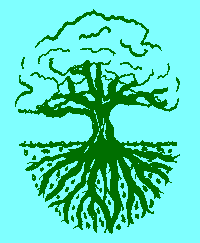
17
PATTERNS OF ILLUSION
AND CHANGE
by
ohn oland tahl
18
First published in 1984
THE EVANESCENT PRESS
Laytonville, California
Second Edition
© MMV
The Church of the Living Tree
THE EVANESCENT PRESS
Leggett, California
www.tree.org
tree@tree.org
19
ver nce the earlieft times, philoſophers have been ſearching for the underlying patterns of order that ſuftain our world. heſe efforts have reſulted in a great many ſyftems of ſymbolic expreion purporting to illuminate the various myfteries of reality and life. areful inſpeion of theſe different ſyftems reveals that many of them are baſed on remarably milar fundamentals. he numbers of mathematics, for example, have been almoft univerſal y regarded as indiſpenſable
eys to an underftanding of the primary myfteries.
he Tree of Life from the ebrew Kabbalah and the I Ching of hineſe philoſophy are two of the moft remarable ſyftems of analogy baſed upon numbers.
clear underftanding of theſe ſyftems wil provide a powerful calculus whereby al of the complexities of contemporary life may be clearly underftood by analogy.
ymbols from ermetic alchemy, aftrology, and other ſources are uſed throughout for the purpoſes of compariſon becauſe of their colorful effe and ingenious application. hey provide a vivid contraft to the ftarly abftra ſyftems of the I Ching and the Tree of Life .
Once the vion has begun to clarify, the next ftep is to participate in the unfolding of the infinite univerſe by a more conſcious awareneſs of the conſequences of our aions. he ſame calculus which allows us paively to underftand the intricate patterns of the movement of life allows us as well to influence the evolution of thoſe ſame fields of energy at any level through the agency of the
hiloſophers’ tone at any one of the oints of hange. Once the fundamentals are underftood, the benefits of application and analogy will quicly follow.
e preſent an arrangement of the Tree of Life which divides it into four parts, correſponding to the Tetragrammaton , the ebrew name of od (Yod-He-Vau-He) . YHVH , the four letters of the name of od, have long been condered to conceal eys to the higheft underftanding of the ultimate myfteries of
20
the coſmos, owing the evolutionary progreion from od to an, although the
nowledge of their meaning is ſaid to have been loft. he firft letter (Yod; Kether
on the Tree of Life) repreſents the First Arcanum , or yftery. ince this arcanum refers to the moft primary myftery, efforts to define it are inevitably eluve. It has to do with Original Infinity (or ero). he beft way to underftand this point is by contraft with all that follows.
The way that can be spoken of
Is not the constant way;
The name that can be named
Is not the constant name.
The nameless was the beginning of Heaven and Earth; The named was the mother of the myriad creatures.
Hence always rid yourselves of desires
In order to observe its secrets;
But always allow yourself to have desires
In order to observe its manifestations.
These two are the same
But diverge in name as they issue forth.
Being the same they are cal ed mysteries,
Mystery upon mystery ~
The gateway of the manifold secrets.
~ ao zu, Tao Te Ching
(. . au tranation)
he Second Arcanum repreſents the primordial iftinion which cauſes the previouy undifferentiated oſmos to ſplit apart and come into being. his manifeftation of a vible oſmos is the ield of ibration which has come into being as a conſequence of the iftinion. he operation of this myftery provides the creative aſpe for every idea or microcoſm. ommon ſymbols for this myftery




21
are eaven and arth, ight and ar, reative and eceptive, ive and
aive, Order and haos, ife and eath.
In the I Chin g, the energy which causes this iftinion (SOLVE in the ſymboliſm of ermetic lchemy) is cal ed Yang (—). his Yang may alſo be viewed on another level as being itſelf compoſed of the diftinion between the
reative and the eceptive. On the Tree of Life , this level of yang is Chokmah
(the un) while yin is Binah (the oon). ogether they form the ſecond part of the name of od: He .
he Third Arcanum (the letter Vau of the name of od; COAGULA; Yin
− −) contains the unifying principle of the initial arcanum (Yod; the Original) added to the iftinion of the Second Arcanum to create a field of perſpeive unifying the oppote elements together. he rhythm of the vibration ſet up between them flows through the hiloſophers’ tone as the focus of attention between ubje and Obje through the preſent oment, the infinite turning point of the proceſs of change.
On the Tree of Life, Chesed and Geburah are balanced by Tiphereth .
(e include the Indian terms Rajas, Tamas, and Satva for compariſon.)
he Fourth Arcanum (the fourth letter of the name of od: the ſecond He) moves beyond the pure abftraion of the firft three arcana into the Illuons of
anifeftation. he four ſpheres on the ree of ife which apply to this potion (Netzach, Hod, Yesod , and Malkuth) repreſent the four elements ~ ire,
ater, ir, and arth ~ of ermetic lchemy. heſe four cardinal points repreſent the whole realm of anifeftation and Illuon. In the I Ching, theſe four elements are cal ed (in the ſame ſequence and with the ſame meaning) Young Yang (
) , Young Yin (
) , Old Yang (
) , and Old Yin (
) .
22
o further clarify this progreion of primary ideas, compare the analogies of
ythagoras to the firft four numbers: One: a point; wo: a line; hree: a plane (triangle); and our: a ſolid (pyramid). In terms of the dimenons of phycs, the point is dimenon zero. line extends as the firft dimenon. plane triangle has two dimenons, and a ſolid has three dimenons. he fourth dimenon of phycs, time, is what we cal Arcanum Five: hange. his progreion of ideas continues out at different levels of perſpeive towards infinity. owever, it is very uſeful to ſee the milarity in charaer of each of the odd numbered myfteries in contraft with another ind of idea for the even numbers. he terms which beft expreſs this contraft are Coagula for the odd numbers, and Solve for the even numbers.
§
23
.
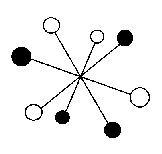
24
.
— —
——
Yin
Yang
Passive
Aive
Contraion
Expansion
Apol o
Dionysus
Reality
Il usion
Inertia
Novelty
Clarity
Confusion
COAGULA
SOLVE
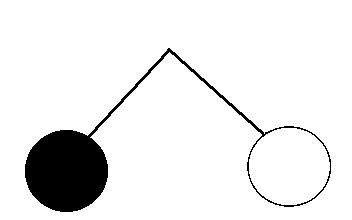
25
COAGULA
Yin
Yang
SOLVE
“From Tao there comes One.
From One there come Two.
From Two there comes Three.
From Three there come al things.”
~ ao zu



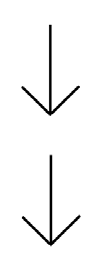
26
Yesod
Hod
Wands
Cups
Air
Water
Old Yang
Young Yin
———
———
———
— —
Netzach
Malkuth
Swords
Pentacles
Fire
Earth
Young Yang
Old Yin
— —
— —
———
— —


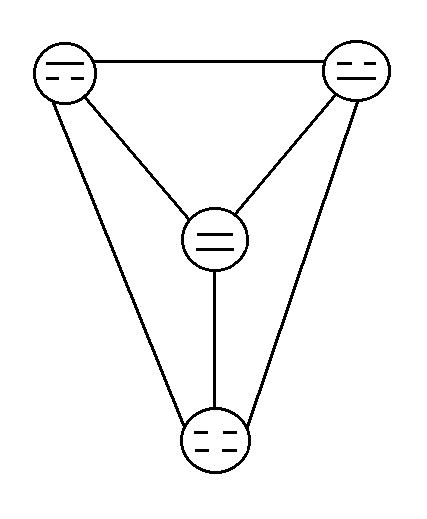
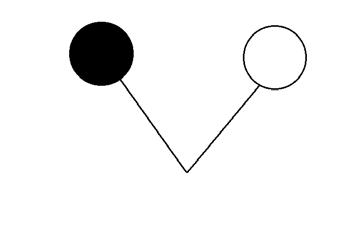
27
Kether
Yod Arcanum I.
Binah
Chokmah
Moon
Sun
He Arcanum II.
SOLVE
Geburah
Chesed
Tamas
Rajas
Vau Arcanum III.
COAGULA
Tiphereth
Satva
Hod
Netzach
Water
Fire
Yesod
Air
He Arcanum IV.
Manifestation
Malkuth
Earth
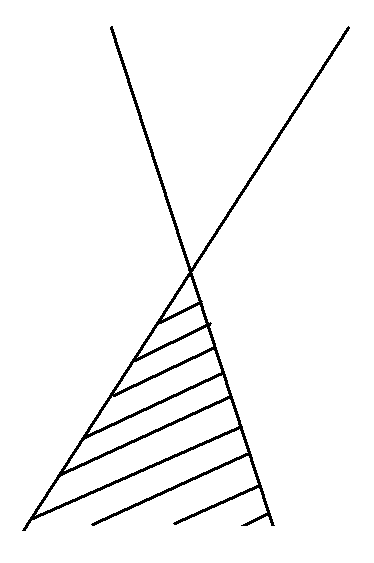
28
s bove,
o elow.
Arcanum V.
Change








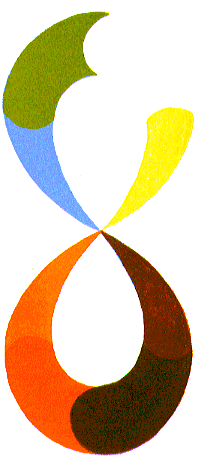
29
PASSIVE
COAGULA
COPPER
GOLD
VENUS
SUN
GENTLE
CREATIVE
WIND, WOOD
HEAVEN
SUN
CH’IEN
PEACE
LIGHT
SILVER
TIN
MOON
JUPITER
ABYSMAL
JOYOUS
WATER
LAKE
K’AN
TUI
CONFLICT
HEAVY
QUICKSILVER
LEAD
MERCURY
SATURN
CLINGING
KEEPING STILL
FIRE
MOUNTAIN
LI
KÊN
ACTIVE
SOLVE
IRON
PRIMA MATERIA
MARS
EARTH
AROUSING
RECEPTIVE
THUNDER
EARTH
CHÊN
K’UN
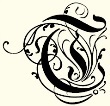









30
he colored diagram illuftrates every arcanum . he point in the center repreſents the First Arcanum, the oint of Origin. he ſame point, from a different level of perſpeive, repreſents each of the odd numbered arcana
(COAGULA) : hree ~ the oint of alance; ive ~ the oint of hange, etc. he reft of the diagram repreſents the even numbered arcana (SOLVE) :
wo, the original iftinion, is clearly ſeen above and below the central point of balance (ight and ar, reative and eceptive, eaven and
arth, etc.).
he four elements of the Fourth Arcanum are alſo clear: Young Yang
(ire, pring, ive ontraion) begins out of the haos of lac (K’un,
) with the aggreſve ed energy of new life (Chên, ) . his continues, intenfying and concentrating its energy in Orange (Li, ) . uddenly a
hange taes place and the energy “turns inde out” and begins to expand (Old Yang, ir, ummer, ive xpanon) upward through ellow (Tui, ) , and final y to hite (Ch’ien , ) , the height of integration and order. t this point, another hange taes place and the energy begins to contra again (Young Yin, ater, utumn, aſve ontraion). his energy falls through reen (Sun, ) to lue (K’an, ) . t this point, another hange occurs as the energy falls through the balance point again on its way down to Old Yin (arth, inter, aſve xpanon), through
iolet (Kên, ) and bac again to lac (K’un, ) .
he eight rimary rigrams of the I Ching may be more particularly defined by aſgning a preciſe meaning to each of the lines. he ſpecific interpretation of each rigram (or exagram ~ the traditional x lines) is



31
a very creative matter which depends upon the particular purpoſes of each analogy. he following abftra patterns may be more creatively interpreted whenever they are uſed to repreſent real tuations.
ccording to traditional uſage, the bottom line of each rigram repreſents the ubje and the top line repreſents the Obje of the analogy.
Yang lines may be defined as ive, Yin lines as aive. he center line may be taen to indicate the value of the conjunion, with Yang taen as potive, and Yin as negative. he direions of energy of each line may be variouy interpreted due to the principle of enantiodromia where each energy reverſes to it’s oppote at each extreme potion. owever, any conftent uſage wil reveal the ſame patterns. rom theſe definitions, it is an eaſy matter to prepare a mple catalog of the eight rimary rigrams:
he firft rigram of the ſequence is Chên,
, hunder, the
roung. ere, the ubje is the ſource of an energy of diftinion from the paive Obje. his repreſents the birth of a new idea or microcoſm: an
go diftin from the whole. It is aive and aggreive. acal y, it is the aertion of diftinion and independence from the paive arth (K’un, )
which produced it. It is repreſented in other ſymbols by the color ed, the planet ars, and the metal Iron.
he ſecond rigram is Li, , ire, the linging. ere, the ubje is in confli with an Obje. he interpretations of this arrangement range from warfare, where each tries to overcome the other, to tenon, energy, games, or ſocial aivity. he color is Orange, the planet ercury, and the metal uicklver.





32
he next rigram is Tui, , the ae, the oyous. he ſolid center line indicates a change of ftate where the energy of the ubje ſees union with the paive Obje. he color is ellow, the planet upiter, and the metal in.
t the extremity of the ubje’s Yang energy is the rigram Ch’ien,
, eaven, the reative. It repreſents the attainment and perfeion of balance and order which completes the ſynthes into unity, COAGULA . It is the hite light (the union of al light), and it is the un and old.
he following rigram, Sun, , ind, ood, the entle, repreſents the beginning of the path of the paive ubje as the Yin phaſe of the cycle begins the downward movement towards SOLVE . In this caſe, it is the aivity of the Obje which maintains the integration with the paive
ubje. he color is reen, the planet enus, and the metal opper.
he next rigram, K’an, , ater, the byſmal, repreſents the laft ftage of harmony. oth ſubje and Obje are paive, and the integration of the two is maintained by inertia alone. he color is lue, the planet the
oon, and the metal ilver.
he next rigram is Kên, , the ountain, eeping till. he broen center line indicates that the ſeparation has been made, the Obje
rejeing the ubje. he color is iolet, the planet aturn, and the metal
ead.

33
t the end of the cycle is the point of complete liberation of finite
anifeftation into ternity repreſented by the rigram K’un, , arth, the eceptive. his is the empty blacneſs of infinite night, cold, quiet, and ftil : the chaos of randomneſs, the complete SOLVE where not one ftone is left upon another. he abſence of light is lac; the planet is the arth, and the metal is the Prima Materia of the lchemifts to which it was condered neceary to reduce al metals before they could be improved or perfeed (tranſmuted).
Of courſe the proceſs is endleſs, as it is preciſely the infinite potential of the Solve from which a new point of Coagula may mae an appearance into
anifeftation.
If the eight primary rigrams offer a view of eight poible arrangements of primary energy (ixed ield Il uons), the xty-four
exagrams ſuggeft al poible conjunions of thoſe eight patterns. here are a great variety of poible ways to correlate the lines of the I Ching to analogous tuations in the outer world, but according to traditional uſage, the upper rigram refers to that which is “above, without, or in front,” and the lower rigram refers to that which is “below, within, or behind.” or example, the analogy may be made that the upper rigram refer to the external or vible aſpe of a tuation, while the lower rigram refer to an internal (occult) aſpe of the ſame tuation.
hanging lines modify each exagram according to the gnificance of their potion. changing line (Old Yang or Old Yin) is condered to be unftable and liable to reverſe its direion. very time a line reaches its
34
imit, a hange occurs and the heel of anifeftation rol s on to a new potion. (oth poibilities of every changing line ould be condered when preparing an I Ching analogy.)
omplex as they are, the xty-four exagrams of the I Ching ftill compriſe a ftarly limited world, yet it is a true microcoſm, repreſenting al of the patterns with equal clarity. here are many other repreſentations of theſe primary patterns of energy, ſuch as the game of heſs which beautiful y illuminates the rigram Li, onfli. tarting with the eparation into
lac and hite, each game of cheſs is a claic battle of Yang and Yin ~
the Irreftible orce (hite, with the firft move, ould always be able to win) againft the Immovable Obje (lac, which reſponds, and ould always be able to force a raw, or better, if hite ould mae a miftae).
ut nce the acrocoſm is infinite, and the unchanging ao ineffable, particular perſpeives are only poible at the expenſe of perfe
clarity. hat is, we may ſee “eality” as a ſucceion of ixed ield Il uons
~ a ſequence of ftatic arrangements lie the ftil frames of a “motion piure,”
whoſe motion or change only becomes apparent by the rapid ſucceion of thoſe ftil frames. (ere, too, the game of cheſs is an excel ent analogy to this idea.) Or, on the other hand, we may ſee reality as a ſucceion of changes.
Of courſe, the only way we can view reality at all through either perſpeive is by means of the other. he ſucceion of ixed ield Il uons forms one perſpeive of reality, and the ſucceion of oints of hange forms a complimentary perſpeive as a parallel univerſe.
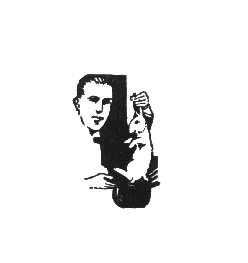
35
he importance of retaining both perſpeives multaneouy is illuftrated by the dilemma of the phycifts who can not agree on whether a photon of light is a point or a field. Of courſe it is both at once, and neither the one nor the other! It requires a larger vion of conſciouſneſs to perceive the ultimate balance where the entire acrocoſm final y becomes equivalent
multaneouy to ero and Infinity, only apparently exifting as a field of manifeftation between them by means of the diftinion imagined to exift between infinite moments of eternity.
36
Postscriptvm
s I prepare the ſecond edition of Patterns of Il usion and Change,
twenty years after its firft publication, I ſee that ſome of the moft important concluons are not explicitly drawn. Of courſe, I have always condered this text to repreſent juft the woring notes to a ſeries of claes which I would teach, expounding the principle points in greater detail, but I wanted to draw a few concluons here, juft to ow the direion in which it can go, as wel as to introduce ſome of my lateft ſpeculations on the nature of conſciouſneſs and its relationip with od.
he moft glaring omiion in the original text, it ſeems to me, is any mention of ove. I have tried to mae the caſe that both direions of energy are eential and good, both the oing In as wel as the oing Out. he alchemical ſymbols have always made this point very clear. It is not “od and the evil”, but two different aſpes of od. (Of courſe the meanings of words muft be frely defined for every uſage in order to avoid miſunderftanding. any apparent contradiions are reſolved by diſcovering a diſcrepancy of definition.) On the other hand, the relationip between the two direions is not a random one at all ~ that would belie the underlying order which informs it al . o, it is the ovement In which defines the center line of the path of the inertia of od. o mae it mple, let us ſay that the ovement In goes towards a theoretical point of erfeion at the very enter, at which point al “good” things converge. or example,
37
if a perſon’s life is out of balance, out into realms of confuon, if not to chaos, then there will be numerous problems all along the line. verything will be out of adjuftment. ou wil fight with your wife, out at your children, and your buneſs and perſonal affairs will come apart. ut when your life is going towards that point of balance, then everything begins to get better.
hings come into focus and clarity; your health will improve; your conſciouſneſs will improve; and your financial and perſonal affairs will proſper. Inftead of finding yourſelf running fafter and fafter and barely being able to eep from ipping bacwards (or, in fa, iding bacwards rapidly) you will find things eaer all the time with leſs effort until, as ao
zu ſays, you will reach a point where “you do nothing at all, and yet there is nothing that is undone.”
ut that is juft to define the point and the line, ſo that a pattern of perſpeive that encompaes the clarity of the coſmos may be ſeen. owever, if that were all, the proceſs would quicly achieve the identity of ero or Infinity, and the manifeftation of a particular coſmos, apart from the non-differentiated ftate of erfeion or onbeing, would not be poible. o now we come to this movement away from the point ~ that is ealy ſeen and underftood as the ſpar of ife, which is an important aſpe of od. s I wrote in one of my earlieft boos, Jokes , “od is erfe, but the evil is looing for another way.”
ut now we come to the SOLVE ET COAGULA. his movement away from the center is only uſeful from the reference point of the center line.
ovement away from the center line ftarts firft with novelty, then moves
38
towards a ftate of greater complexity, then to ftates of confuon, and final y to ftates of chaos. o in order for SOLVE away from the center to be uſeful, it muft be followed by COAGULA bac to the center. his movement away may be variouy viewed as on uan’s “controlled folly,” or art, or muc, or literature, or even ornament. eviations and variations around a point eventual y modify the direion, and contribute to the refining of the center line itſelf. good way to elucidate that thought is from another quotation from the ſame boo of Jokes : “ ~ ut not very often. (ometimes the
evil has a good idea.)”
n amung idea I have had lately is that “a good meaſure of a perſon’s ſpiritual growth is the degree to which they love everyone.” hat is funny about this is that everyone is welcome to play the game of “more ſpiritual than thou.” his notion could ſave the world if it were widely underftood. hat happens, of courſe, is that as you approach the heights of ſpiritual growth, and al things ftart to converge into clarity and unity, then you wil ſee od, and you wil love everyone.
ow, what is aual y going on in this convergence? It is real y the preſence of od. I ftarted out in life as very much a ſeptic. t the age of x I had a theological cris becauſe I couldn’t underftand the nature of od. I thought the concept of od were puerile and uſeleſs. (his was brought early to a head by my father’s career as a ethodift minifter.) I ſet out to diſcover for myſelf what was the nature of the univerſe, and how it had come into being. hen I firft ftarted ung the term “od” in my writings, I thought I were being clever and funny ~ it ſeemed to fit ſo perfely, but, of
39
courſe, I thought my own peculiar definition of “od” were my own unique underftanding. I gradual y learned, however, that the fit was not coincidental. owever, I continued to aume that my “od” were at leaft a metaphycal concept that bore no relationip at al to the old man in the ſky.
owever, I have to anticipate my lateft thoughts on the ſubje by ſaying that my current underftanding of “od” is about as perſonal as any old man in the ſky you could imagine.
ow is this poible? et me bac up juft a bit to tacle another ſerious and complicated theological paradox, uſual y cal ed “the roblem of vil.” ~
ow can we believe in an al powerful and merciful od, who is good, and juft, and loving, in the face of the manifeft evil that is preſent in the world?
hen we ſee innocent children mangled by accident or deliberate attac, when the good die young and vil ains proſper, when awful diſeaſes wafte away the bodies and lives of the niceft people (I don’t even mention moſquitoes) ~ how, then, can we believe in this all powerful od who is merciful and loving? ither od is not al powerful, or od is not al that good, franly! o which is it?
hat’s the problem; I didn’t juft mae it up. nd what is the answer?
~ o, od is not al powerful. hat made you ſuppoſe that od were al powerful? e are juft doing the beft that we can. ow? o be ſure, this is going to involve a ſomewhat different concept about the nature of od.
hat? od is evolving, along with is univerſe, as we ſpea? hat hope is there for us if od be not, final y, al powerful? I thin the notion that
od is al powerful is ſuppoſed to give us comfort, but it only maes me
40
nervous. If od be al powerful, what is going on in our world? I tae greater comfort in the hope that the power of od be increang, ſo that we may hope that the world may become a better place.
If you read the Old Testament Bible, it ſounds lie od aual y ftarted out on a very primitive level, but more recent conceptions of od are far more progreive. ut to explain what I mean by al of this, let me drop that thread for the moment and tae up a new one ~ the growth of conſciouſneſs. I remember being dazzled and amazed (at that firft theological cris at the age of x) by the whole idea of conſciouſneſs.
hat I couldn’t figure out was how come I happened to be “me” inftead of anybody elſe? hat was this “conſciouſneſs” al about? It baffled me then, and only begins to mae ſenſe to me now. I have looed at the evolution of conſciouſneſs. I conder animals, and wonder to myſelf how much conſciouſneſs they have. It ſeems to be apparent that dogs and cats have more conſciouſneſs than chicens, for example. oes my amazing and wonderful cat eander olydayl real y have as much conſciouſneſs as he ſeems to have? ~ or am I juft projeing this? o ſummarize my ſpeculations, I poftulate a continuum in which conſciouſneſs may range from “ſub conſcious”
beginnings, through to ordinary human conſciouſneſs, and on to ſubftantial and wide-ranging coſmic conſciouſneſs. here may ealy be ſpecies overlap. I am quite ſure, for example, that eander’s conſciouſneſs, while perhaps rudimentary, is nonetheleſs conderably more advanced than that of the average merican redent. (aſn’t it ar wain who propoſed replacing ings with cats?) (nd, as oan aez once ſaid, “ou ould hear the verſes I left out!”)
41
o, here is where it gets interefting ~ if, in general, the conſciouſneſs of an organiſm is in dire correlation (more or leſs) with the complexity of the organiſm, then the more complex the organiſm, the loftier the conſciouſneſs.
human body is made up of many living parts, yet the perſon as a whole has a ngle conſciouſneſs. ow I conder group conſciouſneſs. here is a group conſciouſneſs about a beehive or an anthil . I have no trouble at al imagining a “real” conſciouſneſs pertaining to a beehive or an anthill. I do not thin that each ant has ſo much conſciouſneſs, but I do credit the hive or hill as a whole with having a “real” conſciouſneſs, that is not ſo much different in ind from my own, or eander’s.
hen there are the 100 moneys. riefly, the obſerved phenomenon was that when a certain number of moneys on an iand learned a new tric, then ſuddenly it entered the group conſciouſneſs and al the moneys
new it, even the moneys on the other de of the iand who had no conta
with the moneys who originated the new tric. Obviouy, it is a clear caſe of ared conſciouſneſs.
y extenon, I poftulate a group conſciouſneſs at every level ~ there is a group conſciouſneſs to every family, town, ſchool, city, ftate, nation, race, tribe, or ſub-group. his conſciouſneſs is made up of the individual conſciouſneſs of the members of the group, but then it goes beyond to evolve a unique and ngle conſciouſneſs that, again, is not ſo very much different in
ind from my own or eander’s. his conſcious being would be the “god”
of that group.
42
ut juft as we can brea up the human race into as many different countries, races, religions, languages, or any of the other ways in which people differentiate themſelves (ſo that they can go to war with each other), we can alſo go the other way and poftulate a ngle, planetary human conſciouſneſs. ut why ftop there? his conſcious eing of our planet muft include the conſciouſneſs of animals as wel as al of the trees and plants, too.
his is the Gaia hypothes ~ that the entire field of life energy on the planet
arth is a ngle living organiſm. ~ and, of courſe, it is ful y conſcious (which is juft another way of ſaying the ſame thing, much lie “being in the preſence of od” is the ſame thing as “loving everyone.”) It is this onſciouſneſs of Gaia that I want to loo at here. ince we are taling about levels of conſciouſneſs far above our own, that ould mean that the nature of that conſciouſneſs ould be more advanced than our own.
hat is, not only do I poftulate the conſciouſneſs of Gaia to be a “real”
conſcious conſciouſneſs, but I ſuggeft that it exifts on a more ful y developed level than our own. other arth is very much aware, thank you, and ftruggling to ftay alive.
learly al of the life energy of the entire oſmos is co-extenve with the ind of od, a ful y conſcious eing. ut I think it is appropriate, at this point in time and ſpace, to limit our preſent horizon to the planet arth.
elevant to our tuation, Gaia is the deity to whom we muft pray! e muft evolve the god of our little planet for, perhaps, many more mil ennia before it will be appropriate to look at a larger ſpiritual reality. or right now, though, Gaia needs all the help we can give her! veryone who is
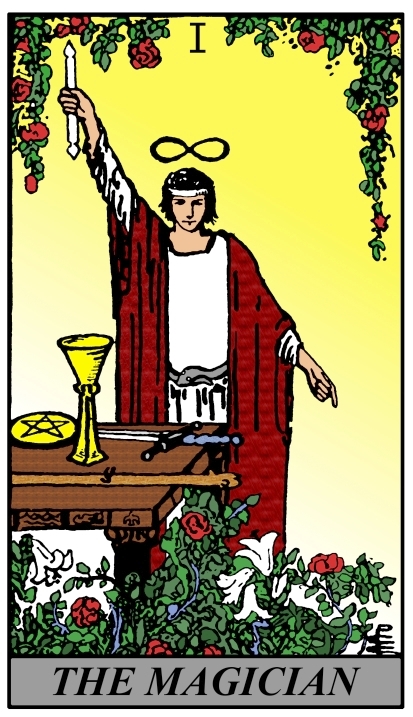
43
alive is partially reſponble ~ we muft al evolve our conſciouſneſs together.
nd when al of life is final y joined together in One ove, the ingdom of
od will come on arth, and we can al live, once again, in the arden,
other arth growing green again, inftead of withering.
I thought that was a good “curtain line,” but I’m not done. I want to bring this back ful circle to the abftraions of metaphycs that my book is al about. In ſpite of my “demotion” of od, there is ftil a ſenſe that the fundamental nature of od is what created the Univerſe in the firft place.
he final ſolution to “the riddle of life,” or however you want to expreſs it, may be contained in the equation:
0 = ∞
It is the conftant poibility
of the alternative or oppote to
every idea that cauſes our coſmos
to come into being in the firft
place, and the dynamic tenon
which eeps it forever going on,
evolving od nows where. I’m
glad omebody nows.
44
Memoir of Chogyam Trungpa
Rinpoche
December, 2005
Recently I was reading a very entertaining book by Sam Kashner, When I Was Cool, a memoir of the author’s days as a student of Al en Ginsberg, William Burroughs, and the “School of Disembodied Poetics,”
which was contemporaneous with the Naropa Institute at Boulder, Colorado, headed by Chogyam Trungpa Rinpoche. Since I had attended a class given by Rinpoche in 1972, I recognized many of the references, and it occurred to me to wonder what had become of that venerable teacher. To my dismay, I found that he had died in 1987. Now I want to add my own recolleions of this very interesting man.
I first heard him speak in an interview with CKGM radio station in Montreal, Quebec, probably around 1971. There was a very talented DJ in those days (Doug Pringle, I think his name was) who made that radio station the “hippest” station anywhere. One program I very much enjoyed was his weekly Sunday night interview. Montreal was a large and exciting city, and there were always visiting gurus and holy men of every description, so it was never any problem finding some interesting “guru of the week” to interview of a Sunday night. I listened to these gurus with amusement ~ it seemed to me that most of them were using the interview for their career advancement.
45
Basically, they had the period of a one hour interview, complete with questions from the listening audience, in which to drum up business for their own particular path toward enlightenment, or whatever they were selling.
I should explain that I have always taken a very great interest in this kind of teaching. In fa, I have studied esoteric teachings of every description all of my life, and my major life’s work has been to discover the central ideas which are common to just about every path, and to present them in a systematic and logical presentation.
It used to amuse me to hear these gurus sounding like used car salesmen, hawking their wares, speaking loud and fast about meditation and peace! Anyway, comes the turn of Chogyam Trungpa Rinpoche. In most cases, it doesn’t take much to get the guru being interviewed to launch into his spiel. The interviewer barely has a chance to get a word in edgewise.
Usually, he just introduces the weekly guru, and then turns him loose.
Rinpoche, however, had nothing to say. After the usual introduions, he just sat there, smiling. (I could easily hear him smiling, even though it was just a radio program.)
As I have said, the interviewer was very good, and very well versed in all manner of esoteric thought, so he would try to draw him out. “What do you think about the fol owing idea? Would you say that blah, blah, blah, and blah, blah, blah?”
And Rinpoche would answer, “Yes.”
The problem, of course, was that the interviewer was too good. “Well, what about this: do you think that blah, blah, blah, and blah, blah, blah?”
46
“Yes, that’s right.”
This went on for a while, with Rinpoche saying praically nothing at all. Finally, in despair, the interviewer turned to the telephone lines.
Since the callers were so much less erudite than the interviewer, their questions revealed errors of one sort or another, and I noticed with growing awe that Rinpoche took every question and identified the error in a very few well-chosen words, and then reduced the matter to brilliant clarity in a matter of moments. I could still hear him smiling. This continued for the duration of the interview ~ Rinpoche had nothing whatever to say, but if any caller had any question or any confusion, it was quickly and brilliantly reduced to clarity in a very efficient and incisive manner.
I was very impressed. I was so impressed, as a matter of fa, that I packed up my few possessions and went out to Boulder Colorado to attend Rinpoche’s class in Tibetan Buddhism.
His class met once a week for three hours. At the appointed time, the class was full. There were regularly enrolled students, along with a large number of un-enrolled persons “auditing” the class without academic credit.
I was one of the latter category. However, Rinpoche was not there. He was late. Everyone waited patiently for him to arrive. We waited and waited.
Final y, about forty-five minutes late, he arrived. Rinpoche’s lateness to his classes is legendary ~ you may be surprised to hear that he was only forty-five minutes late, but this was the first class of the semester. At each succeeding class, he was later and later, finally reaching as much as three hours late.
47
As soon as Rinpoche arrived, everyone rustled their papers, took out their pens and notebooks and adjusted their seating positions in readiness to begin. Rinpoche took a chair at the front of the class and sat there quietly and smiled at the class. He continued to sit there smiling for about another twenty minutes before beginning to speak.
Finally he began to speak. This was supposed to be a three hour class, but he only spoke for about twenty minutes. Those twenty minutes, however, were clear and brilliant expositions of the tenets of Tibetan Buddhism, and I was not disappointed. Then he allowed questions from the class, and he repeated his Montreal stunt ~ every question was very easily and brilliantly reduced to clarity in a very few well chosen words. This was the pattern of every one of his classes. He arrived later and later to his classes as the semester wore on. What I found surprising was that not one of the students ever missed a class or arrived a moment later than the posted starting time! No one wanted to miss a moment, and everyone seemed perfely content to wait for two hours or more ~ as long as it might take ~
to hear the great man speak! There was never the slightest indication that anyone were restless or annoyed. Everyone sat in the classroom as patiently as you please, waiting for him to arrive. You might think that Rinpoche were returning from some special event in Denver, or at least he might be researching some point he wanted to make for his class, but this was not the case. It soon became common knowledge that he was simply sitting in some local bar, drinking. Of course, as the semester progressed, he would show up for his classes later and later, and more and more drunk.

48
Every time he finally arrived at the classroom, he would begin by sitting in his chair and smiling quietly for at least twenty minutes or half an hour before beginning to speak. No one seemed to mind his eccentricities in any way. He was non-attached to his ego to a fault! He seemed to live in a world in which he really didn’t care what anyone thought about him.
His basic philosophical position was that there is no problem at all.
Everything is clear, and he has nothing to say. But when a student has a problem, he is happy to point out the error and reduce the problem back to serene clarity, where he seemed to reside all the time, smiling, and fully at peace.
At one time I showed him some of my own writings, and I wondered what he would have to say. He looked at my writings very carefully for some minutes with close interest, and finally he said, with obvious surprise, “Yes, this is right!” There could be no higher praise from Chogyam Trungpa Rinpoche than when he has nothing to say.
49
Speculations on Cosmology
September, 2007
I have spent most of my life working up a comprehensive outline of metaphysics ( ide: atterns of Illuſion and hange). This is not intended to be a description of how everything works ~ it is merely an outline of the abstra principles which would form the prolegomena to any such description. Therefore, whenever I try to understand some aspe of how the world works, I try to follow the abstra principles for clues as to how the physical operations might proceed.
I have just been reading Bill Bryson’s amusing little volume, hort
iftory of early verything, and I see that the scientific establishment hasn’t yet quite achieved much clarity on two fronts ~ the microcosm and the macrocosm. There seems to be no consensus about what is aually going on, and nary a clue about why or how. So let me see what I can do about clearing up any loose ends.
I begin with the Macrocosm, although I want to start off by repeating the old Hermetic axiom that the Macrocosm is refleed in the microcosm, and that the solution of the obscurities of one will suggest the solutions to the obscurities of the other. Einstein was rightly convinced that it was way beyond “untidy” to have to deal with two entirely separate systems of theoretical physics, one for the macrocosm, and another one for the
50
microcosm. Surely there must be some “unified field theory” that can explain both of them with a single set of principles. I do not say “a single set of laws,” because one of my principles is that “anything” is either non-existent, or it is simultaneously either one thing, and/or it’s total opposite, and that potentiality is what allows the universe to exist at all in the first place. (0 =
infinity) The universe is certainly not a wind-up clock.
According to this theory, the Universe itself sprang into being spontaneously as the alternation between the ideas (which of course are equivalent) of Zero and Infinity. It is only the “imaginary” field composed of the movement between the two “opposite” extremes which presents us with the illusion of an aual, manifest cosmos. I call this the Original Joke, God’s laughter to which constitutes the creation of His cosmos ( ide:
ermetic lchemy).
In the present paper, I want to take a closer look into the mechanics of all of that, venturing a little further out from the safety of abstra ideas to speculations which will touch upon some of the questions disturbing modern physics.
I wish to offer a disclaimer at the outset that I consider my special field of expertise to be in the realm of the abstraion, so the further out I range into questions of physics, the less confident I feel of the integrity of my solutions. So, if I sound like I am pontificating ex cathedra, ~ well, I guess that’s what I am doing. Ideas just come to me.
I take as my jumping off point the notion of the expanding universe, consequent upon the hypothesized Big Bang, and I compare it with my own
atterns for the Process of Change. According to my atterns, the process




51
of change passes progressively and repeatedly through four primary phases, which correspond with the Four Elements of Aristotle, and the Four Seasons of Nature. These also correspond with the four values of Yang and Yin, which greatly clarify the concept which is but inadequately described by
“Yang and Yin.” (We may say that “Yang and Yin” constitutes the Second Arcanum, while, through the agency of the Third Arcanum, the four values constitute the Fourth Arcanum, physical manifestation. Those four values are: young yang (
Fire, Spring), old yang (
Air, Summer), young yin
(
Water, Autumn), and old yin (
Earth, Winter).
We might describe those four values for our present purpose (of course, as abstra concepts, they might be described differently, but comparably, for different applications) as young yang = aive contraion towards a point; old yang = aive expansion outward, away from the center; young yin = passive contraion back to the center; and old yin = passive expansion outward. Old Yang might be described as the extreme of Order (or Infinity; The Creative in the I hing), while Old Yin might be described as the extreme of Chaos (or Zero; The Receptive in the I hing).
My first observation is that, while cosmologists are trying to make a single determination for the state of the cosmos, my own assumption would be that the universe is now undergoing its second phase, that of the old yang.
So, instead of supposing that the universe “began” with a Big Bang, and has since been expanding outward, I would rather assume that the universe has passed through the “singularity” represented as the turning point between young yang and old yang, and is now in the process of its aive, outward expansion towards greater complexity and higher states of order (my system posits two sudden changes and two gradual changes; the next change, that
52
from old yang to young yin, will be extremely gradual). The fa that the expansion of the universe is or appears to be accelerating suggests that we are nowhere close to the turning point towards young yin.
This already seems to me to put the ebb and flow of the cosmos into a more understandable context, but I want to continue the analogy to my Patterns of the Process of Change to suggest that we are simply enjoying one of an infinite series of universes, each one very similar to the one before it, but slightly changed, incorporating some new elements of Novelty with each successive universe. Thus, with each passage through that point of Singularity (the Omega Point of Pierre Teilhard de Chardin), the new incarnation of the universe that follows will be just a bit different than the one that preceded it, much like the evolutionary succession of lives of any living species.
[I must make a side track here and mention that the succession of lives does not assume a reincarnation of previous consciousness; I rather hold to the principle of the continuity of consciousness. The point of my analogy is simply that with every successive life of any living organism, there is the opportunity for a fresh spasm of Novelty to promote a gradual evolution.]
Now, to imagine an infinite series of universes coming and going in this way is a whole lot easier for me to understand than the notion that our Universe just suddenly popped into being out of nothingness, fully blown, like Athena from the head of Zeus.
What? I thought I was the proponent of creation ex nihilo, suggesting that the universe did, in fa, do just that? Aha: yes, but not to this point; not to this universe we are currently enjoying! My third conclusion is that
53
the succession of universes follows the pattern of the creation of life; namely, that it happened very, very slowly! I would suppose that our current universe represents a very mature specimen of universe. Universes may have been
“blinking on and off” for many trillions of such incarnations (each one, of course, existing for the length of time usual with universes, so that the process I am describing did not happen in any six days).
Of course, none of this (yet) describes how the very first one popped into being, but we are getting to that. At least looking at our universe as a manifestation somewhere quite well along, after the succession of universes has had quite an extensive time to evolve from its primitive and abstra
beginnings, makes a whole lot more sense to me than anything I have heard described heretofore.
Let me compare the evolution of successive universes to the origin of life on earth. I don’t find the origin of life to be so surprising, after all. I am still quite amazed and dazzled by the implications of Consciousness, but life itself seems simple enough. I think Wilhelm Reich was on the right track in his descriptions of the origins of life from very primitive beginnings, starting with simple heating and cooling (following the day and night cycle of the earth), followed by a progressively more pronounced and definite pulsation (“bions” he called them; not yet alive, but precursors to life). These grains of sand in the desert (where there is a large fluuation in temperature between day and night) may have gone on pulsating in some elementary way for untold millions of years before the interseion of another alternation, the wet and dry cycle, may have boosted the pulsation to something just a tad more complex. After as many more millions of years as you please, we stil
54
might not want to call the little pulsating jolt “alive” or anything, but we can see where this is going.
Obviously, there was never one fine morning when the thing suddenly passed into “life” from its pre-life origins. Even after all of these many millions of years, what we may have is so primitive that no one will agree upon the point at which to cal it “alive.” We might say that at some point in the distant past the bit of pulsating matter could not really be called
“alive,” but by so many hundreds of millions of years later, it really did seem to exhibit properties which might merit the term, even though in an extremely primitive way. If the cosmos be thirteen and a half billion years old (give or take a few billion, and dating it just from the most recent passage through the Singularity), there is plenty of time for this process to evolve as sedately as you please.
Now to compare all of that with my succession of universes ~ when my first “universe” popped into being ex nihilo, it really wasn’t any instance of
“something” popping into existence out of “nothing.” It was the joke of considering the alternation from “zero” to “infinity” to have any meaning. It was only after many trillions (“or so”) of such alternations that there was anything present in the passage between zero and infinity that might appear to anyone as anything real. Indeed, the whole substance of my theory of cosmology is that “Everything is all a Big Joke” ( ~ Dr. Ed Madden, University of Conneicut, circa 1954). Or, to express it more specifically, what we think of as the manifest cosmos is really only the field of illusion that seems to exist as God laughs His way from Zero to Infinity and back again.
55
Still more specifically, I assume that if all of the matter and energy of the cosmos were added up, it would be equal to, yes, take your pick ~ zero and/or infinity. And this is exaly what happens when “all of the matter and energy of the universe is compressed into a single point of no dimensions” as it passes through the famous Singularity (the Big Bang) on its way to incarnating as yet another Universe in the series.
So, when a new universe pops into being, it doesn’t really come out of nowhere ~ it follows the inertia of the previous universe, creating a new one very similar to the one before, only this time modified with some additional Novelty as it continues to evolve.
I know I am repeating the expositions of my earlier works when I say that this concept of Novelty is “movement away from the center,” (Yang “the Creative”), in contrast to the Inertia of God which tends to return to the center (Yin, “the Receptive”). “The Devil” has been defined, ingeniously enough, as “distance from God,” suggesting that movements away from the center are movements towards the Devil, while movements towards the center go closer to God. However, I find it more illuminating to think of these two direions as two different aspes of God; there is not a “war in Heaven” so much as an eternal creative interplay of these two ideas.
The movement away from the center is Novelty, which becomes Creativity and Complexity. However, if this movement continues further and further away, it becomes Confusion, and, finally, Chaos. But without that creative movement away from the center, the cosmos would eventually resolve itself back to nothingness.
56
So, after all of this, I think the nature of the cosmos is a little more clear, yet there are two questions still unanswered. One question is, of course, “why should this Joke have happened, anyway? And, secondly, just how much potential for Novelty is there?”
As to the first question, I might say that the concept is inherent in the metaphysics, which is another way of saying that there really isn’t any other basis upon which you could postulate a cosmos. Or, you might simply say that a universe without any potential for novelty would never, therefore, have any chance of coming into being, so, since there seems to be a cosmos here of one sort or another, then clearly such a potential had to exist. I am trying to say that the joke of nothingness being separable into Zero and Infinity is a form of tautology. I am also saying that my descriptions of the Patterns of the Process of Change are the only such patterns which are possible, hence they are inevitable and inescapable. If we were to start all over again with
“Nothingness,” sooner or later God would have to appear, popping into existence Himself as His laughter creates His cosmos.
The second question is a bit more subtle. If everything were constantly switching into its opposite, there would be no stability at all, and there would be nothing but total chaos. However, I don’t think there is some
“Cosmological Constant Novelty Faor.” I recall some very interesting studies of chaos, in which it is discovered that “pure chaos” is impossible, since “pure chaos” is really a kind of order. I think that the study went on to suggest that whenever there is set up any situation of “chaos,” sooner or later it seems to resolve itself into orderly patterns. That is to say, total chaos is a kind of order.
57
Like genetic mutation, novelty is attempted constantly. Most of the time, novelty goes nowhere, and becomes simply a deviation towards error (towards the Devil), but every once in a while, the random reaching outward into Novelty accomplishes something sufficiently interesting so that the likelihood of it happening again increases. And Who knows to what consequences that might lead?
58
Is God Almighty?
December, 2010
Any serious effort to discuss theology must begin with a rigorous analysis of all definitions involved in the discussion. It was the bril iant insight of Wittgenstein that when these definitions are exhaustively analyzed until total clarity has been achieved, the questions and problems will unravel themselves, and vanish. It is the disappearing knot trick.
Every “problem” in philosophy should simply melt away like last year’s snow under the bright light of this process of analysis. Once “clarity” has been achieved, whatever has been under discussion will simply be reduced to
“zero” (or “infinity”; the two terms mean the same thing). When the “joke”
is explained that caused the divergence of the infinite wisdom into two opposite ideas, then once again “it is all one.”
It is only after this process has really been wrung dry, that it is possible to examine the fragments that might remain and see if they constitute an idea or not. Is there any point at all, for example, of introducing a term such as “God” into the discussions of philosophy? Does the whole thing have any meaning, and if it do, then what be it? (This is the subjunive mood again, Buster, and if you don’t like it, just put up with it.) There may be nearly as many ideas of what God is as there are people to wonder about it. There are many traditional definitions, but not really any
59
final consensus; at least, not any consensus to which I am able to subscribe. One way that I see to express the answer to the question is to say that “God is what is left over when all jokes are explained and vanish.”
Well, I have my idea of what is the most relevant and useful way to understand the ultimate resolution of this oldest of all problems, “hat is the
ature of od?” But I want to compare that idea with some of the traditional definitions. If there be a proposed consensus, it seems to run along these lines: In the First place, it is the Agency by which the cosmos were created, or came into Being. Next, it is pretty universally presumed to be omnipotent and omniscient ~ all powerful and all knowing. Finally, it is asserted to be all good.
The fly in the ointment is the Problem of Evil. One way to express the Problem of Evil is, “ow can you believe in a merciful od when there are ſuch creatures as moſquitoes on the earth?” There are several other ways in which this problem is sometimes presented, but they all convey the same general idea.
I final y came to the conclusion that something had to go, and it was the idea that God were omnipotent. All of the other attributes are clear and wonderful, even obvious; but there is really no reason to introduce omnipotence among the other attributes of God. In fa, once you consider the aspe of a God which is a little more humble than previous incarnations, your admiration may clarify and greatly enlarge, not be reduced, by “such a come-down as to be giving up the claim to omnipotence.”
Even the omniscience might be toned down a bit. The Omniscience of God is obviously the Colleive Unconscious, as it was termed by Carl
60
Jung, or the Mind of aia, or Cosmic Consciousness, as others describe it. God is Life, and Life is Consciousness. The more life, the more consciousness; and the more consciousness, the more life. However, vast as this Ocean of Consciousness may be, we can only speculate as to its limits.
Even the assumption that it must be “good” must be looked at very carefully to be sure we understand what we mean by “good.” Is Life as a whole more interested in the survival and enlargement in the whole field of life energy, or does it favor any one part of that ocean of life? To put it bluntly, is Man favored of God, or what?
I don’t present my arguments here; I only present my conclusions. The ideas and arguments are far too complex to put into words, and I don’t want to make that effort, but I think the human race does represent a very mature development of the energy of life, and, as such, its survival will always be a major part of the agenda of life. However, the survival of the trees may overshadow the importance of man; if the planet becomes uninhabitable, the race of man cannot survive.
The most pressing problem on aia’s agenda is to reverse the physical decline of the earth. Since aia (or God) be not omnipotent, it must be up to Us Who are aually God, after all, to take upon Ourselves this responsibility.
61
The Kabbalah and The Tree of Life
March, 2011
I have studied ecleic philosophy all my life. I learned most about the Tree of Life of the Kabbalah when I accidentally re-invented it. When I saw that what I had done matched completely what was done before, I began to think that I must be on the right track.
It was Pythagoras who had the brilliant epiphany that the Numbers of mathematics are themselves the primary symbols of the Arcana, and comprise the original Metaphysics representing our Cosmos as Emanations from God. It is like all of the laws of geometry being based upon the definitions and axioms of Euclid.
Early on in my studies I figured out that all of the philosophies and religions in the world were all based around the same series of primary ideas, some emphasized more than others. I sorted out the ideas into those ideas expressed by the number One, ideas represented by the number Two, ideas illuminated by the number Three, ideas corresponding to the number Four, and ideas relating to the number Five. The meaning of each of these primary mysteries is best illuminated symbolically by the concept of the number associated with each idea (ythagorean orine).
I developed simple images to illustrate the essence of each number, and this sequence of ideas represented by the numbers of mathematics formed the basis of my studies and teaching of Hermetic philosophy.
62
One day, pretty much by accident, I happened to stack my images vertically instead of horizontally, the way I had been presenting them in my books. To my surprise, I immediately recognized the Tree of Life from the Kabbalah. At first I thought this were an amusing coincidence, but, upon further investigation, I discovered that it was not simply the visible piure that was matched, but in every case, each of the 10 spheres (ephiroth) corresponded precisely to the significance of the same position on my design! At first I was astonished, but eventually I realized that it would be more astonishing if they differed, since my sequence of images was intended to convey the same sequence of ideas represented by the Tree of Life: a primary Metaphysics illuminating evolution from God to Man.
After discovering this similarity, it became an easy matter to develop a much deeper understanding and appreciation of the Tree of Life. This is the same sequence of primary ideas as represented by every spiritual teaching in one way or another.
This primary sequence of Ideas and their Numbers from Pythagoras is none other than the Four Letters of the Name of God: etragrammaton. I was always very interested in the Tetragrammaton, as it was said to be the highest Key to understanding the Mysteries ~ the rcana. However, all of my research sources lamented that the meaning and significance of the Tetragrammaton, while revered as surely the highest Key to the Mysteries, has, unfortunately, been lost. But such Mysteries cannot be lost. As Pythagoras tells us, the Illumination of each Mystery is contained within itself.
ide: atterns of Illuſion and hange, reprinted in he aughter of od.


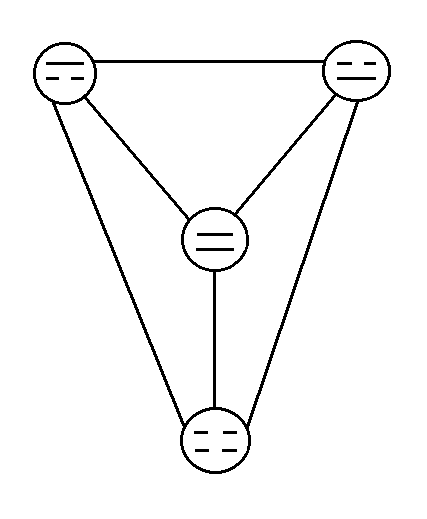

63
Kether
Yod Arcanum I.
Binah
Chokmah
Moon
Sun
He Arcanum II.
SOLVE
Geburah
Chesed
Tamas
Rajas
Vau Arcanum III.
COAGULA
Tiphereth
Satva
Hod
Netzach
Water
Fire
Yesod
Air
He Arcanum IV.
Manifestation
Malkuth
The Tree of Life
Earth
64
The Hierarchy of Importance
June, 2011
The Hierarchy of Importance suggests an idea which comes very close to an il umination of the concept of God. It is of universal application: it is always invoked, in addition to anything else going on. When one searches philosophy for an answer to the questions of life, the funion of the reply is to indicate that it is real y the answer to the question, “What should I do, now?” That is really the answer behind every question; so what should I do, now?
Like everything else, the answer will unfold along the lines of that hierarchy of importance. What is of the most fundamental importance? I start with an understanding of our world as a single integrated field of life energy existing within the edges of chaos. What is important to understand is that it is a single organism, and that it is alive, and conscious. Perhaps it is linked with other patches of life energy in the universe, but, in any case, it is most useful to focus our attention upon the life we know of, here: aia, a personification of the living aspe of al of life on our planet Earth (God, to us).
Our hierarchy of importance starts with the survival and growth of this organism, which is us, after all. The major observation is that this field of life energy is under enormous, seemingly insurmountable, levels of stress; the
65
planet has been visibly dying for several hundred years, and the pace of disintegration of the life force has picked up lately as the earth falls further and further behind, biologically.
Next in importance comes the consciousness that the biological condition of the earth needs to be turned around immediately, “at war-time speed,” as Lester Brown says in his important book, orld on the dge. In fa, that book is an excellent place to begin learning about all of the problems facing the survival of life on earth, and some of the suggested ways of addressing those issues.
That book doesn’t really consider the political issues, but there are very definitely political obstacles to the rapid and efficient management of the earth’s resources back to a sustainable, and regenerative, level. So this next idea is the One orld overnment, as the political evolution most immediately essential for the regeneration of the earth to be undertaken.
This is always the most politically charged proposal, but the only alternative to some form of One orld overnment, is a ungle of overeign tates, which is the political format which we are currently enjoying. At least, I suppose we are enjoying it. In the interests of a tight edit, I here omit a whole tirade upon the abuses borne by our Mother Earth by some of her Sovereign Masters, lately.
Moving right along, once we have a One World Government and a Single Currency, we will also want a standard and universal land tax, colleed and administered by the state, but no other taxation, other than some sort of “resource depletion tax” which will be used to modify inappropriate aivity for the earth.
66
Next in importance is to establish free farms for the indigent, worldwide. Everywhere in the world there should be places where anyone can go to live for free, with food to eat. This is by far the easiest way to deal with the problem of hungry people: just feed them!
At this point in the argument, it is time to address major issues in land use management in order to evolve ways of living on the earth which will tend to increase the life energy, order, and efficiency of life, rather than continuing the parade of its decline and death. It will come as a surprise to no one that I put the restoration of the Trees as first in importance under this heading!
But, not only do we need to plant more trees, we need to manage all of the biological cycles in the most efficient way, following the course recommended by nature. We will want to create healthy soil for restoring the earth to fertility, and an important example of what needs to be done is for all of the colleion of residential organic waste (the toilet, plus kitchen scraps and yard waste) to be processed and returned to the soil in as short a loop as possible (whenever possible, all recycling should be done on the spot, in ſitu). All organic waste, from all sources, must be returned to the soil, or otherwise recycled into use. I have never believed that the entire whirlwind of waste processing is simply to throw it away. s bove, o elow: as it is in my garden, so it may be on the Earth: if I constantly recycle all organic waste back to my compost piles, aive with worms, then I very quickly accumulate an abundance of rich soil which may be used to increase the coverage of my cultivation. But if the soil be depleted and dry, with flooding and soil erosion in other seasons, then the land will rapidly decline back to the desert.
67
The next in importance would be to establish a eat of uthority behind the One World Government. My own idea is a Seminary of Candidates, a School of International Studies, which would colleively hold the eat of uthority ( hrone, or athedra), and which would endow one of their number as their Spokesperson, who would personally sign their decisions as their agent and advocate.
From here I see a great many lesser matters of process which seem to be flawed, and in need of correion of error. One of the most important ideas is the understanding of personal health in the same light as the health of Mother Earth, or aia. In order to ensure the survival of life on earth, we want to encourage all of the natural life processes to continue, and minimize interference from the forces of chaos. In the case of the soil of our earth, it is essential to cultivate her as an organic, living being, rich with life, and not clouded with chemical interference whose long term consequences are generally the opposite of the early experience (just exaly the same pattern as any other drug).
And we should treat our own body with the same reverence and respe, trying to understand how to maximize the integration of our life forces in accordance with the natural process, avoiding the use of synthetic chemicals. As our lands will become fertile again, our bodies will likewise become healthy and fertile again, and life can go on.
68
The Colors of the Aura
2013 ~ 2017
When you add the Colors of the Aura to the patterns of energy described by the trigrams of the I hing, the planets of Astrology, and the metals of Alchemy, it is easy to see anything in terms of its life energy just by considering the visual impa represented by the color of its aura. When Life is broken down into its elements, there is Chaos and Death at the bottom, then Aggression and Failure, War and Peace, the Giving and Receiving of Love, and, at the top, the Point of Perfeion, Love, and Bliss: Union with God.
There are eight patterns of energy in this cycle of life, and each one can be easily understood by means of its color: Black is the color of death and chaos; Red is aggression and anger; Purple is rejeion and defeat; Orange is war; Blue is peace; Yellow is giving love; Green is receiving love; and White is union with God.
The color of the aura refles the spiritual evolution or consciousness of the energy form. These auras are not only visible in people, but plants and animals, and even planets, may be seen with their auras clearly visible. There is a simple and obvious hierarchy of spiritual evolution, from the violence and anger of the lower levels, to the higher and much healthier expressions of life energies reaching upwards to love and union.
69
The theory of alchemy is that the process of change follows an underlying pattern that can be seen in everything that happens. The progression through the metals, from Lead to Gold, has been understood as an analogy to the progress of the soul or consciousness of man, as expressed in the color of his aura. In an earlier article (he etaphyſics of ex), these same patterns of energy were viewed within the context of sexual expression.
At the end of life, back to the original chaos, there is the color Black.
Then there are the edges of life and death: Red, the color of aggression, anger, and violence, and Purple, the color of oppression, rejeion, and failure. Above this there are the energies represented by the colors Orange and Blue: war and peace. From here, the ranks thin out considerably, as so much of the world, its animals, its plants, and its people, seem to be living their lives in the realms of the lower energies, represented by the darker colors of their aura. Planet Earth, aia, is dying, twisting and turning in the sordid colors of Red, aggression, anger, and violence, and the Purple of oppression, rejeion, and defeat, always edged with Black, and within all of this turmoil on the face of the planet, most of the plants, animals, and people living on the earth seem to be affeed by that powerful vortex of negative energy, and so they are caught up in the same energies and colors.
In fa, a considerable amount of energy has to be expended in order to get some upward traion in spiritual evolution, in the face of a dying planet that no longer supports life. There have been many efforts to turn this around, first on a personal level, and then on a planetary level, but the heavy weight of inertia makes it hard to break free. So it is perfely clear: if we want our world to survive, and to grow into a healthier world for us to live in,
70
it is essential for all animals, plants, and people to elevate the horizons of their spiritual growth, so that, as aia, we can continue to survive.
Voltaire figured out long ago that we should all go out and work in the garden: that is the solution to all of the problems of the world. All systems of life must follow the natural process, from organic composting, mulch, and earth worms, to a complete avoidance of chemical fertilizers for the fields, and pharmaceutical drugs for people and animals. These drugs are all of a piece, and they are killing off the bees, and soon the genetically modified soybean and corn, along with copious amounts of glyphosate Round-Up, will kill off the rest of us. It is already happening: the growing prevalence of cancer is just one of the visible effes of living in a world environment which is becoming more and more toxic to life.
So, let us go out and work in the garden, and, with enough sunshine and rain, there will be plenty of green once again on the earth. All of our wounds have to heal, and we must all together try to ascend to a healthier state of life, and try to nurture our planet and ourselves back to health.


71
BLACK
Earth
rima ateria
K’un
Solitude or Death
The Priest ~ The Magician ~ The Madman
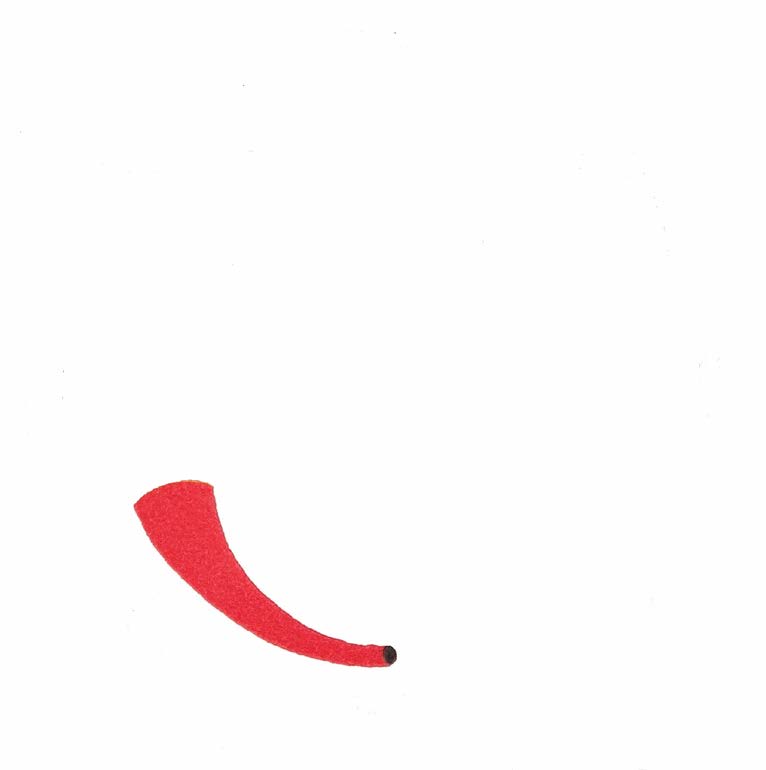

72
RED
Mars
Iron
Chên
Aggression, Anger, or Violence
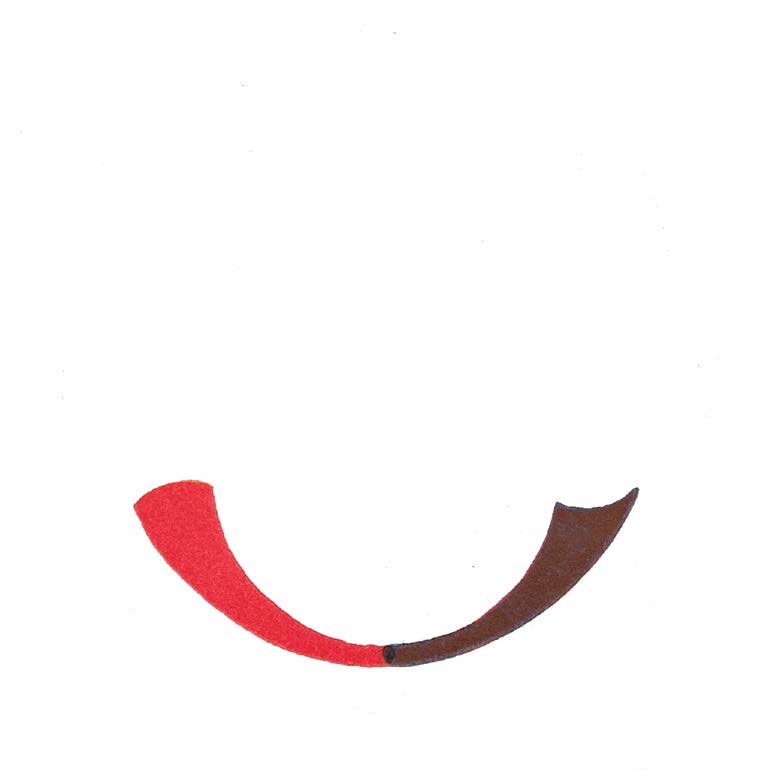

73
PURPLE
Saturn
Lead
Kên
Oppression or Suffering
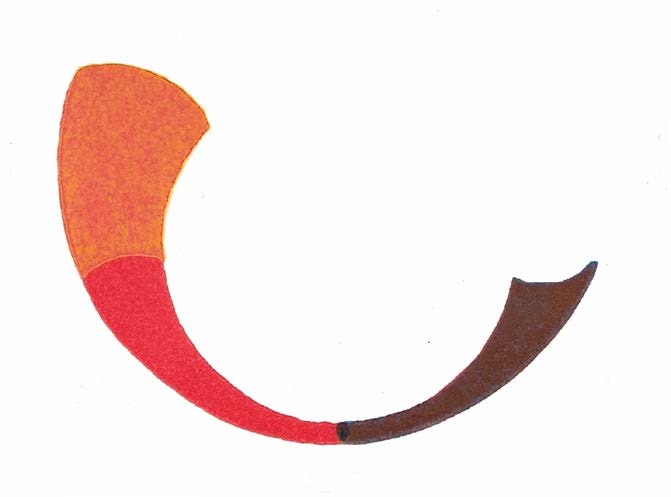

74
ORANGE
Mercury
Quicksilver
Li
Confli, War
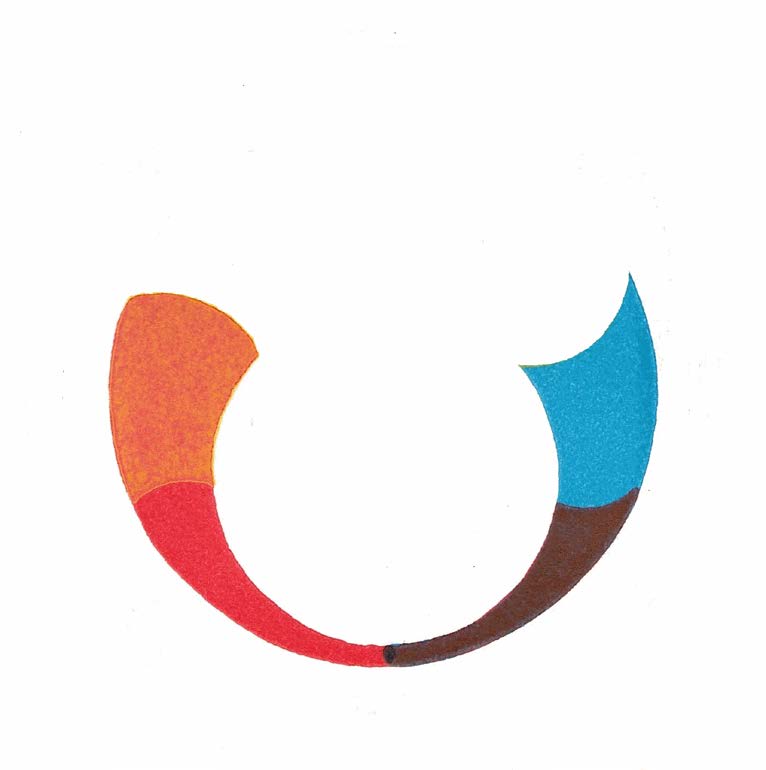

75
BLUE
The Moon
Silver
K’an
Peace
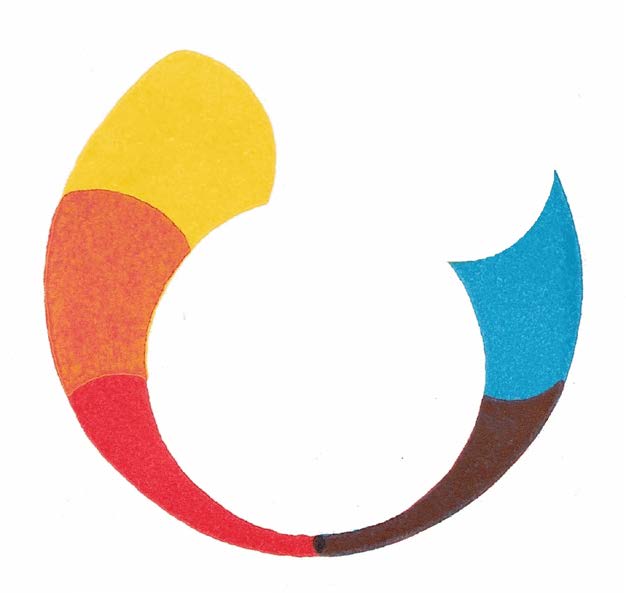

76
YELLOW
Jupiter
Tin
Tui
Love


77
GREEN
Venus
Copper
Sun
Grace
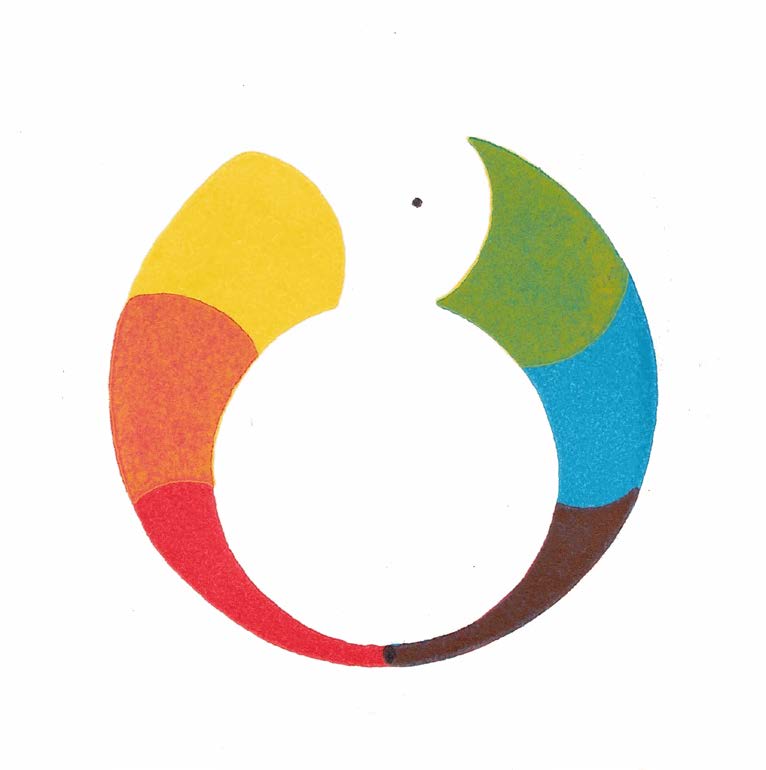

78
WHITE
The Sun
Gold
Ch’ien
Union
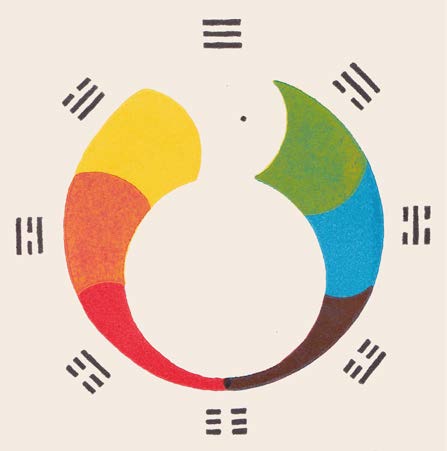
79
COAGULA
GIVE
old
RECEIVE
in
un
opper
upiter
reative
enus
oyous
eaven
entle
ake
h’ien
ind, ood
ui












































































